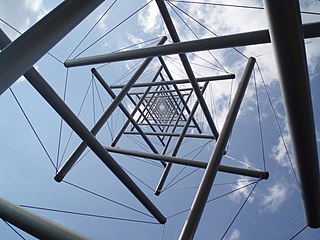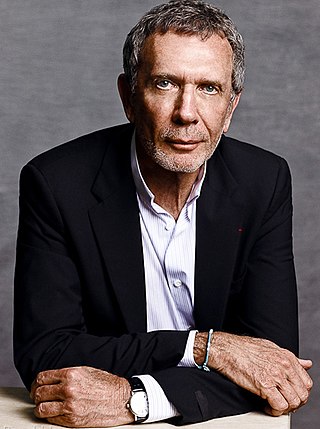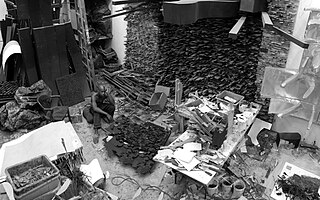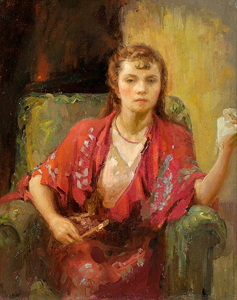
The Hirshhorn Museum and Sculpture Garden is an art museum beside the National Mall in Washington, D.C., United States. The museum was initially endowed during the 1960s with the permanent art collection of Joseph H. Hirshhorn. It was designed by architect Gordon Bunshaft and is part of the Smithsonian Institution. It was conceived as the United States' museum of contemporary and modern art and currently focuses its collection-building and exhibition-planning mainly on the post–World War II period, with particular emphasis on art made during the last 50 years.

Kenneth Duane Snelson was an American contemporary sculptor and photographer. His sculptural works are composed of flexible and rigid components arranged according to the idea of 'tensegrity'. Snelson preferred the descriptive term floating compression.

Robert Gober is an American sculptor. His work is often related to domestic and familiar objects such as sinks, doors, and legs.

Sam Gilliam was an American color field painter and lyrical abstractionist artist. Gilliam was associated with the Washington Color School, a group of Washington, D.C.-area artists that developed a form of abstract art from color field painting in the 1950s and 1960s. His works have also been described as belonging to abstract expressionism and lyrical abstraction. He worked on stretched, draped and wrapped canvas, and added sculptural 3D elements. He was recognized as the first artist to introduce the idea of a draped, painted canvas hanging without stretcher bars around 1965. This was a major contribution to the Color Field School and has had a lasting impact on the contemporary art canon. Arne Glimcher, Gilliam's art dealer at Pace Gallery, wrote following his death that "His experiments with color and surface are right up there with the achievements of Rothko and Pollock."

Irene Rice Pereira was an American abstract artist, poet and philosopher who played a major role in the development of modernism in the United States. She is known for her work in the genres of geometric abstraction, abstract expressionism and lyrical abstraction, as well as her use of the principles of the Bauhaus school. Her paintings and writings were significantly influenced by the complex intellectual currents of the 20th century.
Leo Villareal is an American artist. His work combines LED lights and encoded computer programming to create illuminated displays. He is living and working in New York City.

Arnold "Arne" Glimcher is an American art dealer, gallerist, film producer, and film director. He is the founder of The Pace Gallery. Glimcher has produced and directed several films, including The Mambo Kings and Just Cause. He is the father of art dealer Marc Glimcher and American scientist Paul Glimcher.
Michael Loew was an American Abstract Expressionist artist who was born in New York City.

Antipodes is a public artwork by American sculptor Jim Sanborn located outside of the Hirshhorn Museum and Sculpture Garden in Washington, DC, United States.

Are Years What? is a sculpture by American artist Mark di Suvero. It is in the collection of the Hirshhorn Museum and Sculpture Garden, in Washington, D.C., United States. The sculpture is named after poet Marianne Moore's "What Are Years". From May 22, 2013 through May 26, 2014, the sculpture resided temporarily in San Francisco, as part of the San Francisco Museum of Modern Art's Mark di Suvero exhibition at Crissy Field.

Agricola I is a 1952 abstract sculpture by American artist David Smith. The artwork is located on the grounds at and in the collection of the Hirshhorn Museum and Sculpture Garden in Washington, D.C., United States. The word "agricola" means "farmer" in Latin. This work is the first in the Agricola series by Smith.

Draped Reclining Figure, 1952–53 is a bronze sculpture by Henry Moore, catalogued as "LH 336".

Throwback (1/3) is a public artwork by American artist Tony Smith, located in the Marsh & McLennan Companies (MMC) Plaza at 1166 Avenue of the Americas in Midtown Manhattan, New York City, New York.

King and Queen is a bronze sculpture by Henry Moore, designed in 1952. It depicts two figures, one male and one female, seated beside each other on a bench, both facing slightly to the left. It is Moore's only sculpture depicting a single pair of adult figures. Moore's records suggest it was originally known as Two Seated Figures.

Leonardo Drew is a contemporary artist based in Brooklyn, New York. He creates sculptures from natural materials and through processes of oxidation, burning, and decay, Drew transforms these objects into massive sculptures that critique social injustices and the cyclical nature of existence.

Three Piece Sculpture: Vertebrae is an abstract bronze sculpture by Henry Moore.

Gladys Nelson Smith was an American painter.
Maggie Michael is an American painter. Born in Milwaukee, Michael has spent much of her career in Washington, D.C. A 1996 graduate of the University of Wisconsin-Milwaukee, from which she received a BFA, with honors, she received her MA from San Francisco State University in 2000 and her MFA from American University in 2002. She has received numerous awards during her career, including a grant from the Joan Mitchell Foundation in 2004, the same year in which she was given a Young Artist Grant by the D.C. Commission on the Arts and Humanities; she has also worked with the Hirshhorn Museum and Sculpture Garden. Michael is married to the sculptor Dan Steinhilber. She has served on the faculty of the Corcoran College of Art and Design.

Wandering Rocks is a 1967 steel sculpture by Tony Smith, made in an edition of five plus one artist's proof. The Minimalist work comprises five different polyhedral elements painted black.














